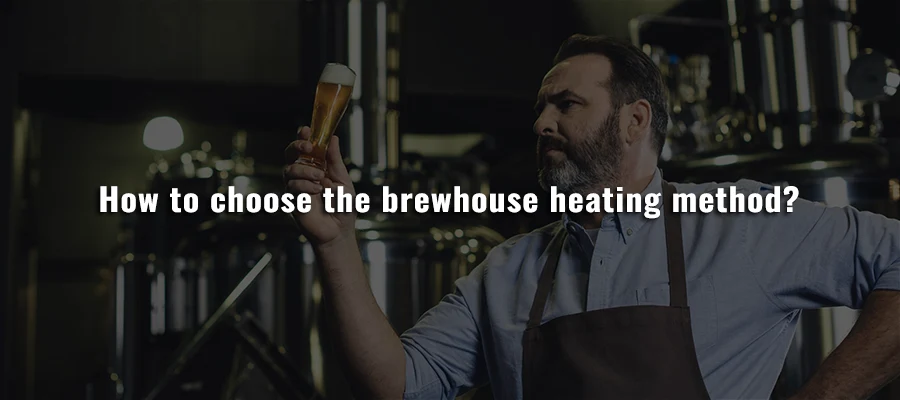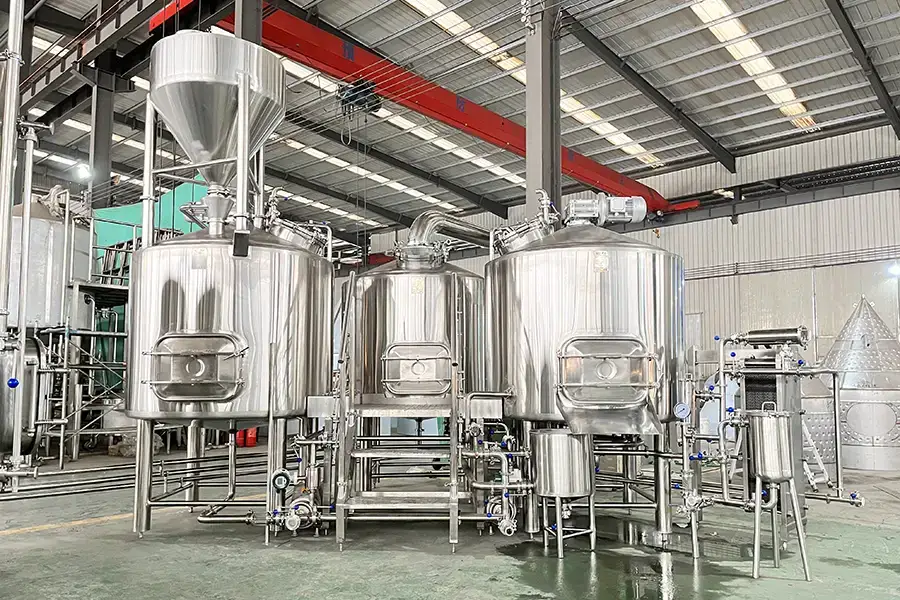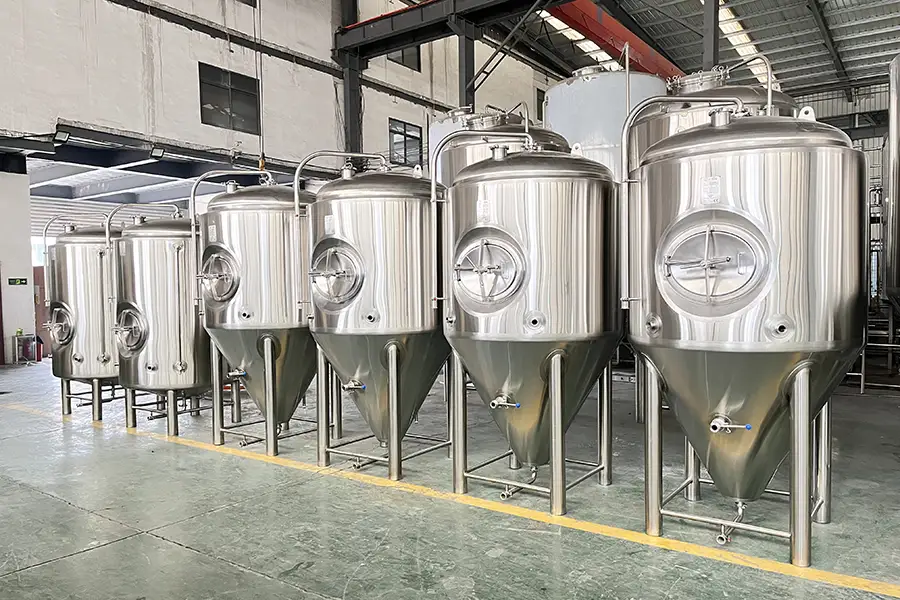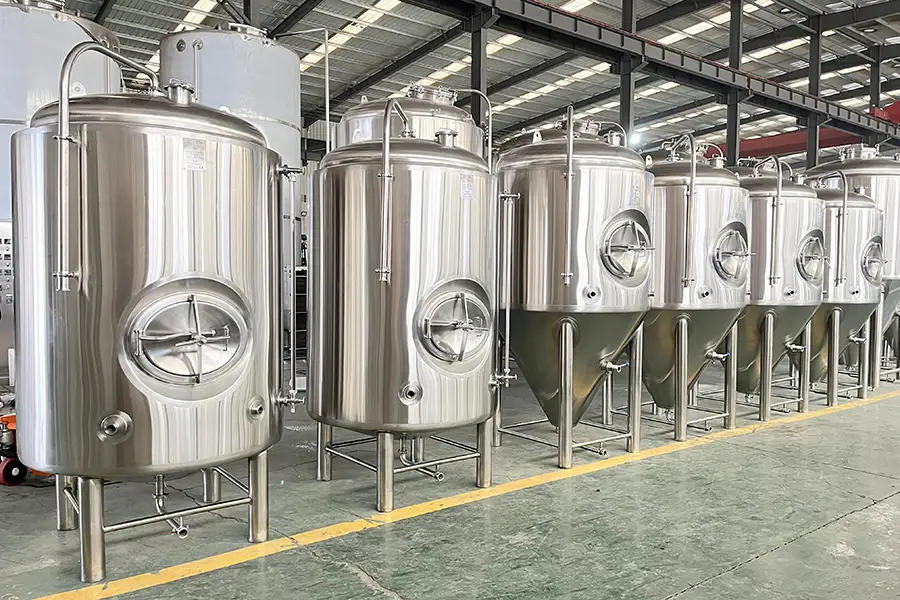How to choose the heating method for a brewhouse is one of the important issues that need to be considered when setting up a brewery. In this article, Micet Group will introduce you to what aspects of the brewhouse heating method should be considered.
Questions to consider when choosing the heating method of the brewery:
Brewery Scale
Different brewery scales use different heating methods. If your brewery is 5HL (4.25BBL) or below, in most cases, electric is your best choice. This is because breweries of this scale are generally located in residential areas.
If you open a brewery in a residential area, then the only thing you need to concern about is the steam from the electric kettle, because no steam boiler or open flame is involved. Steam cannot be discharged directly to the outside vent, you need to install a steam condenser at the steam outlet of the brewery. The steam condenser allows cold water to pass through the vent, turning the steam into liquid and directing it to the drain.
Electric heating is cheap to install because you only need to buy electrical components, while steam requires boilers, pipes, and water treatment devices. Electric heating takes up less space, and the only thing to worry about is whether your heating tank will burst during the brewing process.
For smaller breweries, low initial start-up costs, easy setup, and small footprint electric heating are the most ideal choice. The electric heating method supports up to 10BBL (11.7HL) brewhouse. With the increase of electrical components, the more power the brewhouse requires. The rated power of many buildings is not up to the demand. The installation cost of a large electric brewhouse may be very high, now, direct fire heating will become a viable alternative.
Installation cases of 1500L 3 vessel brewery
Brewhouse in the range of 5HL (4.2BBL) to 17.5HL (15BBL)
As we just said, if your building can provide enough power, the power can support up to 11.7HL (10BBL). If you can’t provide enough power, then direct fire heating is a viable option. Although the installation cost of direct fire heating is more expensive than electric heating, it is still cheaper than steam heating.
The space required for direct fire heating will not be very large, depending on the size of the system you are using. With a brewhouse with this capacity range, you can be a faucet room or a beer bar, and space will be a limited consideration for you. Also, because there are no boilers, boiler rooms, or pipes for direct fire heating, it is easy to operate. If you are in a residential area, then direct fire heating is more likely to pass installation regulations than to use steam.
Direct heat heating can quickly heat the wort (the fastest option). But, direct fire heating will cause hot spots in the container to cause caramelization, especially when direct fire heating is used from the bottom. Within the scope of this brewery, steam is also an option. But, you may use an electric steam generator instead of a professional gas boiler. The electric steam generator takes up less space and is easier to maintain. Before you consider using steam heating, please confirm with your local government whether your location supports the use of steam generators.
In this range of brewhouses, all options are available:
Steam eating: If you can pass the local steam generator regulations, and your budget allows, you can use steam heating. Steam heating can also be used in other places in the brewery (will be described in detail below).
Electric Heating: If your building can get enough electricity, and local regulations are difficult to install direct fire heating and steam heating, your initial budget will be reduced. But electric heating has a disadvantage: the larger your system, the longer it takes to boil, and the boiling will not be too violent.
Direct Fire Heating: If your budget is limited and local regulations operate, then direct fire heating may be a good choice. It would be very good news if you brew in remote areas because you can use propane.
Brewhouse above 17.5HL (15BBL)
In larger breweries, we always recommend steam heating. When you are at this level, you can also use steam in other places, for example, you can sterilize your kegs/barrels with compressed air. When you use a brewhouse of this capacity, you may have 3, 4, or 5 containers. Using steam to heat HLT (Hot Liquid Tank), mash tun, and brew kettle may be helpful. Steam heating will save you a lot of time every time you brew. So, you can brew many times a day, and the labor and time saved will gradually repay the more cost of installing the steam boiler over time.
A brewery of this size consumes too much electricity for most places, so electric heating will not be chosen. You can continue to use direct fire heating, but the benefits of using steam for a brewery of this size are more attractive. The larger the brewery, the more attractive the piping system installed, which can better control the boiling and evaporation rate. Also, the brewing process can be copied more easily.
Initial start-up cost
If you have a small brewpub (less than 500 liters) and have a limited budget, then electric heating will be your best choice. The installation of electric heating and local regulations is easier because it is also easier to start the brewery. Also, electric heating is the lowest initial start-up cost among the three heating methods. Although electric heating has the highest operating cost among the three heating methods, space-saving is its greatest benefit.
For brewhouses in the medium-sized range, which heating method is used may be related to which utility is cheaper in the location of gas and electricity. If you can use natural gas, then direct fire heating may be the best choice. Although the initial start-up cost of direct fire heating is higher in most places, the continuous operating cost is lower than electricity.
A steam heating system would be the most expensive option. But at a certain scale, the advantages will indeed be superimposed. It represents the best heating option for breweries. This is because the steam heating is efficient, the heat is distributed evenly, the color absorption rate is low, the heating speed is relatively fast, and it can also disinfect other parts of the brewery.
Efficiency/Regulations
When designing the efficiency of different heating methods, the electric heating efficiency with low-density elements is the lowest. But because the electrical components are in the wort, 100% heat transfer can be achieved. You need to choose electric heating according to the size and availability of the brewhouse and building.
When it comes to the efficiency of using direct or indirect thermal heating, there may be more choices. There are three methods to choose from:
- Direct firebox at bottom of the kettle
- Internal helical coil
- Indirect fire via jacket
How to choose depends on your budget and the local regulations in your area. The internal helical coil is the most expensive option. But like most costs in brewing, the cost will be recovered over time. The coil is the most effective heating source. If your initial budget is tight, then you can use direct heat directly under the kettle. Direct-fire heating installation is cheaper and may become your best choice. But, the use of direct fire heating may cause local hot spots and caramelization, so be extra careful when brewing lager beer.
Temperature difference/hot spot
Steam heating makes the most consistent brewery heating option. When using steam jackets, they will not be as hot as direct fire jackets, but there will still be a small number of hot spots or caramelization. In terms of hot spots alone, it may be the worst to catch fire directly under the kettle. Cleaning after boiling is usually made more difficult due to the agglomeration of deposits. Electric heating with low-density electrical components can also cause some local hot spots around the components. The use of modern electrical components can reduce the chance of scorching, but some caramelization is likely to occur.
For some beer styles, caramelization is desirable, even in line with the beer style. In some Scottish beers, longer boiling time and caramelization are required. If you have several beer styles that require caramelization in your core beer styles, then direct fire heating will be your perfect choice.
Colour Pickup
Colour Pickup is like hotspots. It depends on the brewery heating option you choose, you’ll see a difference in the color pickup. Among beers such as barley, Colour Pickup is desirable.
Like caramelization, certain beer styles require color extraction from the Maillard reaction in boiling. For each heating method, the colour pickup is:
High Pickup -> Electricity -> Direct Fire -> Indirect Fire -> Steam <- Low Pickup
Some beer styles may require a colour pickup, and some beer styles may not require a colour pickup. Normally, with modern technology and brewery design, no matter which heating method you use, the colour pickup is not a problem. Before purchasing equipment, you need to ask the brewery equipment manufacturer whether there is a color picking problem in their system.
Heating rate
When brewing many times a day, a heating method that can heat the wort faster will become the first choice. You will save time and labor costs by completing heating faster.
Electric heating using low-density electronic components usually takes the longest time, and the boiling may not be as violent. Direct fire heating may heating the kettle quickly but will lose a lot of heat to the air around the kettle. Indirect combustion coils or jackets submit less “heat loss”. Also, the coil is the most effective because it is immersed in the wort. Steam heating is very good at quickly adding wort to the kettle. Steam heating has a steam jacket specially designed for the mash tun, which can heat mash at a rate of 1°C per minute. Whenever it comes to heating speed, steam heating always wins.
Application of the heating method in other brewing processes
Steam heating is the only heating method that can be used in other parts of the brewery. You can apply steam heating to:
- Heating all other brewing vessels, including CIP devices;
- Clean and disinfect the kegs/barrels on a dedicated cleaning machine;
- Sterilize the compressed air to sterilize the wort;
- Clean the barrel for your barrel program;
There may be other uses, and we will add them when we think of them. If you are a large brewery that can use steam in other parts of the brewery, this is indeed an important factor in your overall decision-making process.
The Vigor of the Boil
When choosing the heating method, boiling intensity is also a more important factor. This is because vigorous boiling can get a good evaporation rate and ensure the removal of unwanted volatiles. DMS (Dimethyl Sulfide) is a kind of peculiar smell, which is expressed as the taste of “corn” in beer, which will severe the flavor of the beer. The best way to control it during the brewing process is when it is boiled and heated.
Brewhouse heating method conclusion
When deciding which brewhouse heating is right for you, it is not an easy question. Factors to consider include:
- Location – Are you in a residential area? Is it in an industrial area or on a farm?
- Budget – How much is your budget?
- Architecture – Are you a beer in a small space? What are the local building codes for your building?
- Utilities – What type of electricity can be used in your location? What are the prices of natural gas and electricity in your area? Is propane a more convenient fuel for you?
- How big is your brewery – if it is small, then electric might be best? If it is larger, being able to use the steam elsewhere may be useful to you.
Of course, there are some other parameters, such as Colour Pickup, boiling intensity, heating speed, and hot spots, and the possibility of scorching that need to be considered. When all these factors are considered together, the final decision will be made on which heating method to choose for the brewhouse.
Get a Turnkey Solution
If you still don’t know how to choose the brewhouse heating method, you may contact us. Our engineers will recommend heating methods for you based on your requirements and brewing process, combined with your local conditions. Of course, Micet Group will also provide you with professional turnkey solutions, allowing you more time to concentrate on brewing delicious beer. We look forward to cooperating with you!








Thanks for pointing out that it is important to consult with your local government first before choosing steam heating for your brewhouse. I guess there are different options for brewery boilers out there such as using gas, electricity, and fire. And I think it is bets to look at your local laws and regulations if you plan to start a business in this industry to ensure that there will be no violations that can halt your operations in the future.